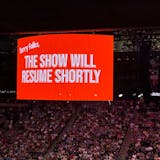BALTIMORE – When the man in the teal hoodie mentioned that he had trained as a pharmacy technician, Lachelle Hill's voice rose in excitement. "Why don't I see that on here?" the state job counselor asked, pointing at the paperwork on the table between them.
Hill was counseling Corey, a 30-year-old jobseeker who didn't share his last name, at a federally funded job center in Baltimore.
Unemployment insurance beneficiaries are required to look for work, but Hill wasn't just checking Corey's paperwork for compliance. She was helping him focus his job search, and trying to steer him toward positions he was qualified for.
Such conversations are central to a re-employment grant program that the U.S. Department of Labor has touted for years. In February, Congress passed a budget bill that would make the program permanent and increase its funding from about $100 million last year to more than $3 billion over the next six years.
But creating evidence-based employment programs can be tricky. While research generally shows that employment assistance helps people get jobs, it's not always clear why certain programs work well and whether they can be expanded.
The nationwide employment program that Corey's benefiting from is based on a Nevada model that significantly reduced the amount of time people received unemployment benefits. Studies have yet to determine whether the Nevada approach can get the same results elsewhere.
Back at the job center, Corey said he'd been looking for jobs on roadwork crews and at the seaport, and talking to a friend about starting a day labor business. Hill zeroed in on the brightest spot on his résumé: his pharmacy training, which could net him wages of about $15 an hour in the area.
"Sometimes, people crash because they aim too low," Hill said. Corey said his pharmacy technician license had expired, but Hill said, "Let's look into the recertification, and see if we can get you the funds to do that."



